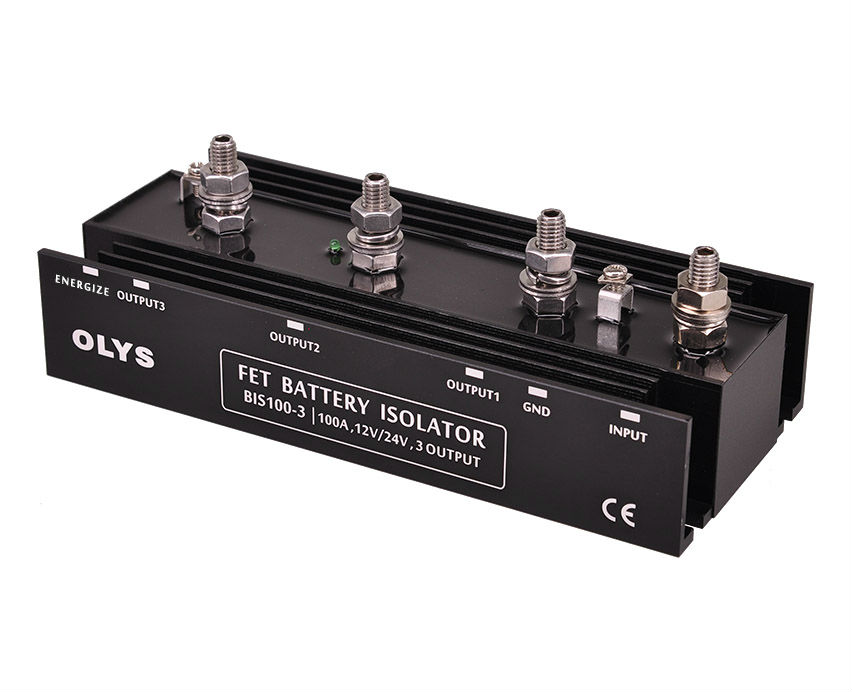Battery isolators and battery separators can be selected based on various use-cases considerations. The main differences between the devices lie in the direction of current flow, efficiency, and quiescent current draw. An isolator is essentially a diode system that allows one-directional current flow. At the same time, a separator can select to allow current to flow in either direction depending on various system parameters and needs.
An isolator can provide users with a simpler and lower-cost solution. Auxiliary equipment can be run without considering whether the engine is running or not. The isolator automatically disconnects the vehicle’s main power system. When the engine is running, all equipment is powered from the main power system. When the engine is turned off, the equipment is automatically switched to the auxiliary battery.
There are also considerations for vehicles that may be kept in storage for extended periods: Isolators have zero quiescent power draw, while a battery separator has a small quiescent draw. As a result, the use of a separator will slowly drain the battery, adding to the battery’s self-discharge and reducing the time that a useful level of charge main remains in the battery. However, an isolator will not allow an external charger to charge both batteries, while a battery separator will allow an external charger to charge both batteries.
Isolators are useful for multi-battery systems where redundancy is needed, such as utility vehicles that experience many engines, starts, and stops during a workday. With an isolator, no battery will drain the other batteries in the system, enabling redundancy for a system with multiple auxiliary batteries plus the main battery on a single alternator. On the other hand, a larger alternator may be needed since an isolator will charge all batteries evenly.
